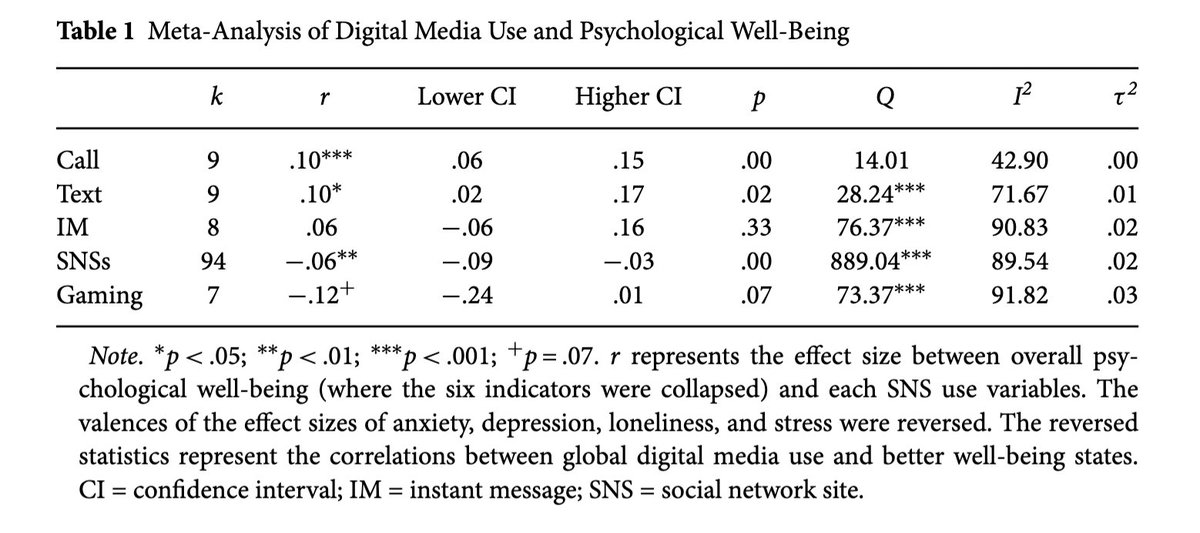
Significant findings do not mean SUBSTANTIAL findings.
A thread.
A thread.
A recent metanalysis claims evidence that online games are socially displacing and related to worse mental well being after 124 studies in the field.
Catchy abstract, but let's look a little bit deeper.
researchgate.net/publication/33…
Catchy abstract, but let's look a little bit deeper.
researchgate.net/publication/33…
Despite my concerns that all measures of well being were collated in to a single score of overall wellbeing... (that's a different thread) ...they report an overall effect size between gaming and well being a -.12 with a p value of .07.
Two things to take note of here...
Two things to take note of here...

First, an effect size of -.12 is small and almost indistinguishable from general "noise". Current standards suggest the threshold for .2 to even claim "small" effects.
simplypsychology.org/effect-size.ht….
simplypsychology.org/effect-size.ht….
Second, p = .07 is not a significant effect. The standard threshold for significance is .05.
For non statisticians out there, this means that the analysis shows that the relationship is just as likely to have been found by chance.
For non statisticians out there, this means that the analysis shows that the relationship is just as likely to have been found by chance.
This is actually NOT what was found. Even if the effect size had been larger and significant, the evidence still wouldn't signify displacement effects outright. 

The debate about displacement effects due to gaming have been going on for YEARS and generally speaking, lacks empirical support.
I myself am more inclined to support a Cycle Model of Use... but I digress.
I myself am more inclined to support a Cycle Model of Use... but I digress.

...there will be videos about social displacement, compensation, augmentation and the Cycle Model of Use coming up on @Psychgeist_ in the coming months.
👉 youtube.com/psychgeist
BUT the point of this morning rant was to highlight the importance of scientific literacy.
👉 youtube.com/psychgeist
BUT the point of this morning rant was to highlight the importance of scientific literacy.
In this era of headlines and clickbait, it is important to remember that not all science is good science and not all sources of information on the internet are created equal.
• • •
Missing some Tweet in this thread? You can try to
force a refresh




